

Author: Kent Moors, Ph.D.
This week’s Spy Tale emerges from the heart of British history. It also illustrates how involved some apparently simple tasks end up becoming.
Initially, I need to set the stage before introducing some drama unfolding more recently than other entries in this series.
For over a decade, one trip Marina and I have looked forward to occurs each year during early March. Then, an impressive group of international energy experts meet at Windsor Castle outside London for what has always been the most interesting of my varied appearances.
Oh yes, one of the cool things about the affair is that we also get to stay at the castle!
In 2001, Queen Elizabeth II issued a royal proclamation for an annual energy consultation to be held there, always the first weekend in March (while the royal family is in residence), For 18 consecutive years, the Windsor Energy Consultation brought together a small group of internationally recognized energy experts, policymakers, and corporate leaders in intense conversations with ambassadors, government ministers, representatives of OPEC and the International Energy Agency, as well as others.
This is a memorable experience. First off, Windsor Castle is a significant part of UK history. It has the longest record of continuous residence of any royal palace or castle in the world. William the Conqueror began its construction shortly after the Battle of Hastings (1066) with expansions almost without stop for the next centuries. Just about every major event in British history either was made or reflected here.
It is today a drafty building (downright cold if the March winds are blowing) with plumbing issues, priceless antiques (even after the devastating November 1992 fire), and its own coterie of ghosts (the “Grey Lady” who apparently spooks where we stay in the complex also has a sense of humor, moving things about and leaving “calling cards” from other parts of the castle).
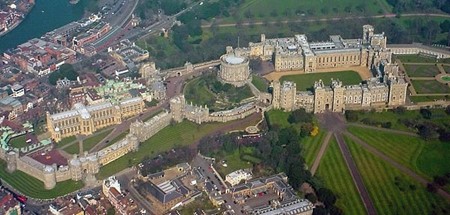

It is difficult not to feel that history walking through the Henry VIII gate (located in the lower left-hand corner of the photo above), our annual entrance to our castle residence taking us directly past the silent guards in the famous bearskin hats.
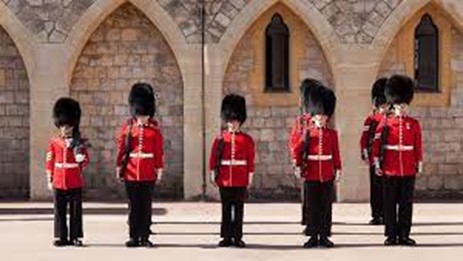

One interesting fact about the head gear. While now made of a synthetic fiber, they continue to be hollow, kept upright by bamboo. The uniform has no pockets and the guards are not supposed to have any personal effects on them. But they are known to stick private articles “beneath the bear.” Until health concerns took over, that often meant cigarettes and matches.
Every morning, to reach where the plenary meetings are held, we would walk past historic St. George’s Chapel, the site of two royal weddings in 2018 (Prince Harry and Meghan Markle on May 19 and Princess Eugenie and Jack Brooksbank on October 12) and the recent funeral of Prince Phillip, husband of the queen.
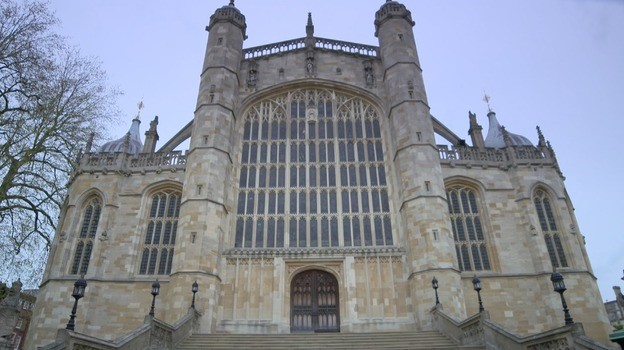

On each annual visit, the chapel knights provide us a private tour of the Chapel, the Knights of the Garter inner chapel, and the royal burial sites within, including a rather eerie walk over the tomb of Henry VIII and Jane Seymour.
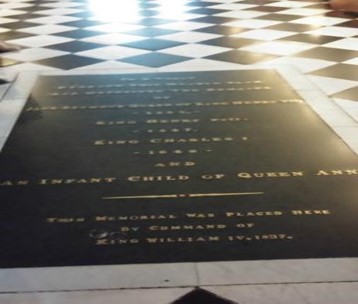

Windsor is central to much of the pomp and circumstance associated with the British monarchy.
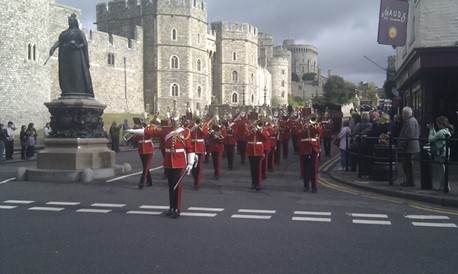

But the castle is also the location for the Energy Consultation. And even though it has occurred for only the most recent two decades of the castle’s over 950 years, it has had its own share of famous moments.
In the years that I have participated, we have had some memorable events.
This is a very small and restricted gathering. It is by invitation only and encompasses a select group of the world’s most knowledgeable energy experts, practitioners, and policy makers from six continents. We conduct frank discussions under the Chatham House Rule.
That Rule owes its origin to a particularly cantankerous diplomatic negotiation held under the auspices of the Royal Institute of International Affairs in June of 1927. The Institute is located at Chatham House in London. Those discussions were about to collapse until the Rule was instituted.
It states: “When a meeting, or part thereof, is held under the Chatham House Rule, participants are free to use the information received, but neither the identity nor the affiliation of the speaker(s), nor that of any other participant, may be revealed.”
On more than one occasion, the Rule has provided “cover” for some of our very direct and pointed conversations at Windsor. The Rule limits what can be said about conversations, but not about the themes that have emerged. On one occasion, we struggled to reach an agreement on a “red line” separating energy issues in the Persian Gulf from military consequences arising as a consequence.
That line was not reached, and some acrimony surfaced in the process. Even though all of us have come to know each other rather well over the years, the connection between energy markets and national policy remains a touchstone for discord.
During the discussion, an unusual argument emerged between developed and developing countries in which the very history of a British Empire followed by more recent US financial and trade hegemony in the global system came under attack.
On another occasion, then US President Donald Trump’s various attempts to unravel the post-World War II system of alliances and the American position in that system, came under sustained attack. It was interesting that in this heated exchange Washington received no support from anybody not there from the US.
But perhaps the most contentious disagreement occurred several years ago surrounding the status of US shale oil and gas development when it came to adverse environmental impact. Several European and Asian experts provided detailed criticism of American production expansion, followed by a rather energetic defense of the US “oil patch” by several of the Americans in attendance.
Nonetheless, despite (and in some cases because of) the Rule, a broad accord has emerged over the past several years on what the global energy picture looks like and where it is going. These have included the balance of energy sources going forward, the nature of the movement of worldwide demand from North America and Western Europe toward Asian markets, and the positioning of new energy alternatives like renewables and battery developments.
Some of the conclusions drawn in past Windsor Consultations have had a direct impact on national policy – the slow movement in the UK to renewables, the transformation of German energy reliance from hydrocarbons, rising Chinese control over the next generation in energy technology, concerns over energy infrastructure shortcomings, and regional pricing difficulties, to name a few.
Throughout its existence, the Windsor Energy Consultation has had a singular position in framing the global energy conversation, on some occasions serving as an important sounding board for worldwide events.
The annual meeting at Windsor Castle will continue to lead the worldwide conversation. And it is a personal privilege that I will be part of these discussions.
But not recently.
The 2020 and 2021 gatherings fell victim to the coronavirus. There had been a move to break with tradition and hold this year’s sessions next month (July). But the continuing problems in the UK has scuddled that idea. The group is now considering October this year in the latest attempt to save the 2021 meetings.
Meanwhile, the Windsor Energy Group (the parent body, taking its name from the annual castle affair) regularly holds additional meetings on special subjects, continuing its practice over the past two decades of bringing us together for discussion and debate on major energy issues throughout the year. These days, these take place online rather than in person. I have addressed two of these over the past seven months – on the South China Sea crisis and the current situation in US shale oil production and attendant credit concerns.
But it is the annual gathering at Windsor Castle that is the seminal event and we all await its renewal.
For ten consecutive years I have provided one of the briefings to the 40 or so experts who assemble each year, along with a carefully selected guest list from energy sector and government officials. That list changes from year to year, but the experts have become a close group who regularly exchange ideas and opinions privately.
During each Consultation meeting at the castle, those plenary sessions have taken place in one of the castle’s oldest and most historic locations. It has been renovated on several occasions. Nonetheless, Vicar’s Hall is where tradition tells us Shakespeare presented the first performance of “The Merry Wives of Windsor”…to Elizabeth I somewhere around 1597!
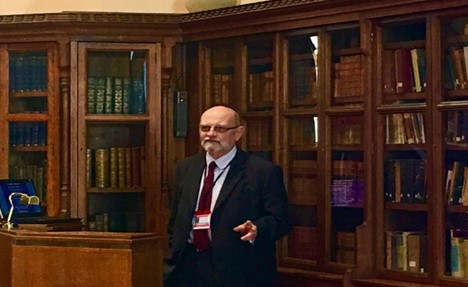

By the way, the lanyard in the photo contains a photo ID that must be worn at all times. After all, we are inside the castle grounds and the royal family is in residence. The ID comes directly from MI-5, British domestic intelligence, who vet every member of the Consultation and keep a file on them. Given my intelligence background and the years I spent living in the UK, mine is thicker than most.
However, it is on the Saturday of each Consultation that a totally unique event occurs. Assembled ambassadors to the Court of St. James (i.e., the UK diplomatic corps) from dozens of countries are brought to the castle dungeon for a briefing.
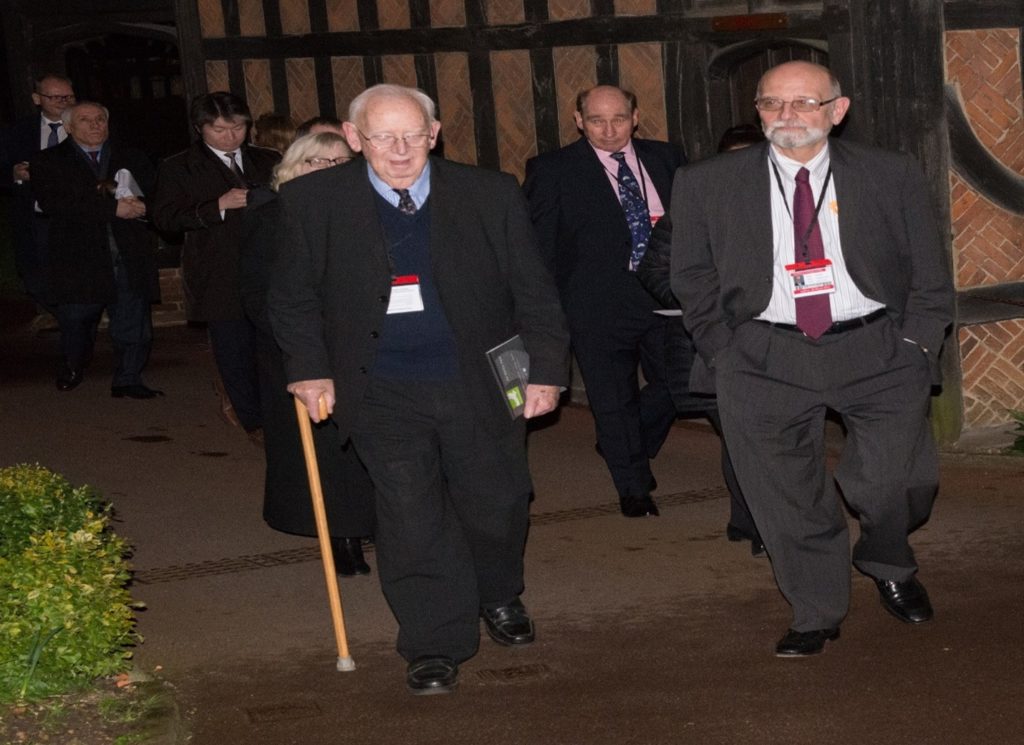

The briefing is an open and frank conversation (once again conducted under the Chatham House Rule) in which some national disagreements have been known to percolate forth. It is always my most demanding presentation.
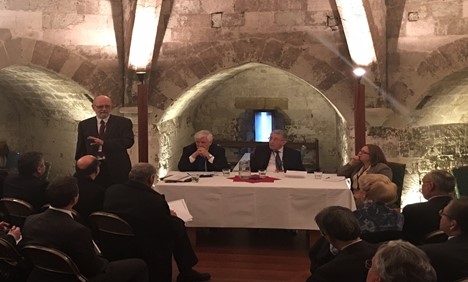

Upon occasion, those conversations would continue once we removed ourselves from the dungeon. And in a few cases, they would spill out beyond the Consultation and the castle.
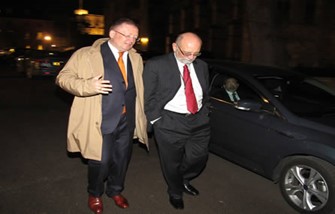

And it is finally at this juncture, that I can move into today’s tale.
What I probably enjoy more than anything else during the annual castle stays is the fact that this is a part of my professional life aside from intelligence. Rather, this results from the years of developing a later reputation in global energy analysis. My trips to Windsor, therefore, were bereft of other concerns.
Except once.
It was March 2017 and bitterly cold at Windsor. A late snowstorm had blanketed the castle grounds and gave all of it an eerie “holiday out of synch” feeling.
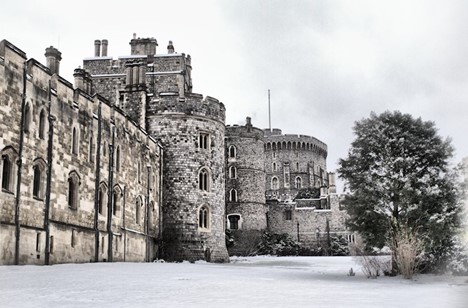

The sessions had been productive, but uncharacteristically tiring. One element contributing to the unusual pressure I was feeling was an intel problem that had emerged even before we arrived at the castle.
Marina and I had come to London several days before the meetings began, catching a flight from Miami that brought us to Heathrow earlier in the week. Despite the airport being quite close to Windsor, we decided to spend the extra days in London at the Mandarin Oriental. The hotel fronts Hyde Park and opens on the other side into Knightsbridge, just up Brompton Road from my haunts in Kensington when I had lived in the city.
The weather did provide a few advantages. It was so cold that Marina decided to forsake the brief walk to Harrods, that famous provider of unnecessary extravagance. I considered that a personal (but silent) victory. But as we prepared to move on to Windsor (by train from Paddington via Slough), I was contacted by the CIA Station in the US Embassy.
The embassy staff was in the process of moving to the striking new US diplomatic complex at Nine Elms on the south bank of the Thames. However, the agency was still operating out of the old embassy on Grosvenor Square in Mayfair. That was normally a short walk from the Mandarin. But on this occasion, I took a hackney (those ubiquitous London black taxis).
Now, at this point in my life (approaching 70), I was no longer a serving officer, although continuing to advise as requested and providing occasional auxiliary support to ongoing operations. I had spent many years going in and out of that poorly designed and badly heated section of the embassy. My appearance on this occasion indicated nothing much had changed.
I knew the Chief of Station from earlier days (he had been a ranking officer in an earlier rotation during my time in London). But the rest of the crew were too young to remember what the Cold War was like at its height or the counterintelligence (my job) that went with playing the Great Game in those days.
The Russians were still a concern. But these days more time was spent on counterterrorism and directed to countries in other parts of the world. It was because of one of these (in the Persian Gulf) that I was summoned on this frigid morning.
There was a need to contact, debrief, and pass something along to an advisor of an ambassador attending both the Windsor Consultation and my dungeon presentation at it. That advisor was also one of our agents (a foreign citizen spying on behalf of the agency). Normally, this could have been done “in town” using standard procedures. In this case, however, the advisor was not on regular staff at the country’s embassy in London, and would fly in to meet with his ambassador at Windsor and then fly back out the next morning. The castle is barley 20 minutes from Heathrow. The contact had to be at Windsor or not at all.
There was an additional problem. Some of the ambassadors and other public ministers would be coming in for a reception, the dungeon briefings, followed by a dinner afterwards, and then be driven back to their residence in the city. Others would be staying overnight at the castle.
The ambassador in question was staying at the castle overnight. But the guy I needed to contact was not. Staff would be put up in a hotel across the street – the Harte and Garter. This is a combination of two inns that have literally been around since the 14th century (fortunately remodeled since then). We have stayed there on several occasions and found it quaint.


Unfortunately, it complicated matters a bit. I could not pass him anything during the castle activities (where everybody and their “handlers” where in full view of everybody else). That meant it had to be at the hotel.
While my ID allowed me to enter and leave the castle grounds, security (both MI5 and other national agencies connected to those attending the Consultation whose officers were also staying at the hotel) would register the movements, especially at night by somebody who was supposed to be living at the castle.
Enter some improvised arrangements. I had our station set up a “reception” by some fictious company at the hotel. Several of us in pure cowboy fashion (with the agent and some other staff in tow) crashed the party. In the festivities, I had ample opportunity to finish the debrief with the agent and finalize the transfer.
My concern centered about the two security guys attached to Russian Ambassador Yakovenko who were staying the night at the hotel while their boss was across the street in the castle. They would certainly notice what was going on. So, I made it a point to invite them (and some other people as well).
Marina is Russian and can charm anybody, even intel officers. So, she made a point of smiling a lot and conversing with them in the mother tongue. They never knew what hit them.
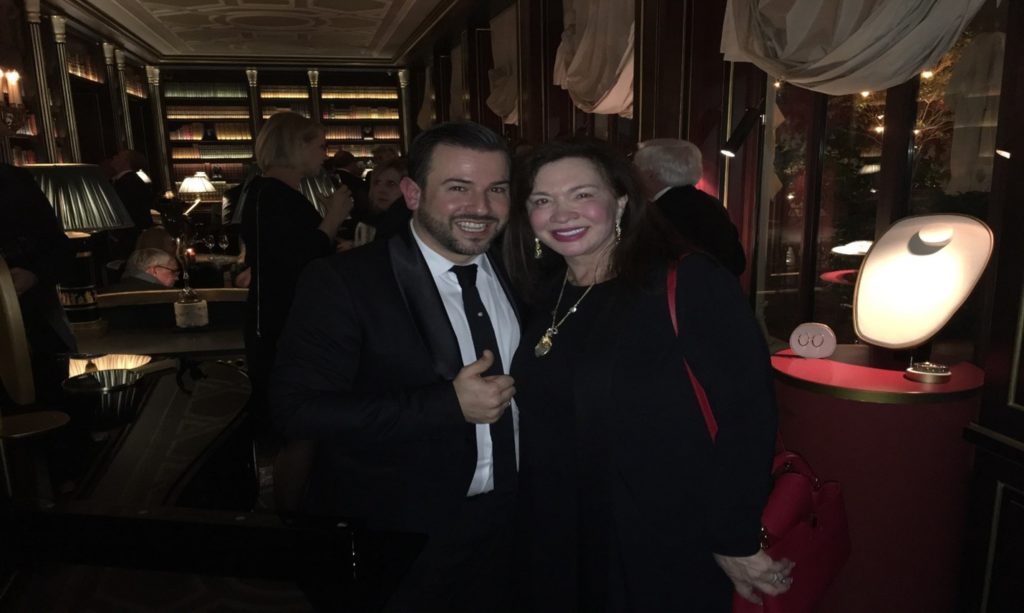

Next time we were in London, I made a note to myself, Marina could spend all the time she wanted at Harrods.


This is an installment of Classified Intelligence Brief, your guide to what’s really happening behind the headlines… and how to profit from it. Dr. Kent Moors served the United States for 30 years as one of the most highly decorated intelligence operatives alive today (including THREE Presidential commendations).
After moving through the inner circles of royalty, oligarchs, billionaires, and the uber-rich, he discovered some of the most important secrets regarding finance, geo-politics, and business. As a result, he built one of the most impressive rolodexes in the world. His insights and network of contacts took him from a Vietnam veteran to becoming one of the globe’s most sought after consultants, with clients including six of the largest energy companies and the United States government.
Now, Dr. Moors is sharing his proprietary research every week… knowledge filtered through his decades as an internationally recognized professor and scholar, intelligence operative, business consultant, investor, and geo-political “troubleshooter.” This publication is designed to give you an insider’s view of what is really happening on the geo-political stage.
You can sign up for FREE to Classified Intelligence Brief and begin receiving insights from Dr. Moors and his team immediately.
Just click here – https://classifiedintelligencebrief.com/






